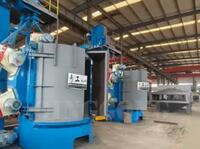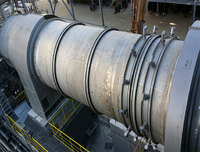Gyro Rotary Screen machine
Product Details
The Gyratory screen incorporates the advance technology in screening machine.This machine is useful to screen
- Country:India
- telephone:91-91 79 25890134
| The Gyratory screen incorporates the advance technology in screening machine.This machine is useful to screen |
Send inquiry / quota request to Gyro Rotary Screen machine
Relate products of Gyro Rotary Screen machine
Rotary shot blasting machine or table type shot blasting machine is suitable for various shapes and dimensions, casts, forged parts, pressed parts, steel, and non-ferrous metal parts and parts made from fragile materials, cleaning surface, removing casting sand and filings, ...
CIC have accumulated decades of experience in the production of industrial sludge dryer machine, through continuous improvement, research and development, CIC sludge dryer manufacturers are looking for breakthroughs according to the site and operation conditions to make our ...
Rotary Table Shot Blasting Machine for Sale Rotary shot blasting machine or table type shot blasting machine is suitable for various shapes and dimensions, casts, forged parts, pressed parts, steel, and non-ferrous metal parts and parts made from fragile materials, cleaning ...







